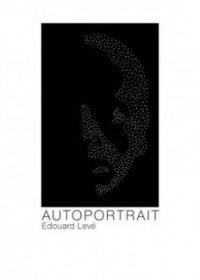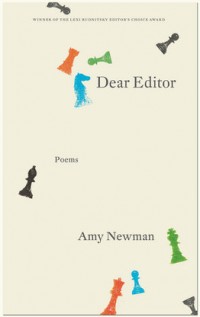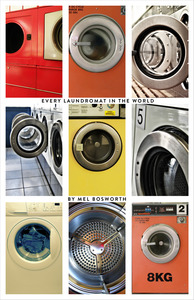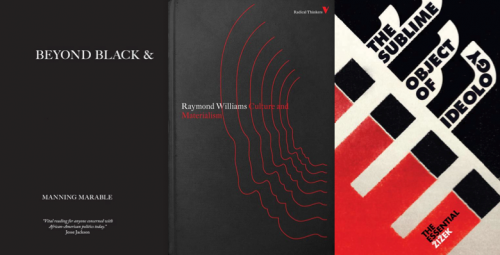25 Points: The Emily Dickinson Reader
 The Emily Dickinson Reader: An English-to-English Translation of Emily Dickinson’s Complete Poems
The Emily Dickinson Reader: An English-to-English Translation of Emily Dickinson’s Complete Poems
by Paul Legault
McSweeney’s, 2012
247 pages / $17.00 buy from McSweeney’s
[Note: In the text that follows, the leading number refers to the catalog number assigned to each Dickinson poem and its accompanying translation. These numbers are derived from the Franklin (1999) edition of Dickinson’s oeuvre. The trailing trailing number appearing in square brackets references the actual “point number”, and thus the in order in which the reviewer would prefer, although would not require, that these 25 points be read. JM]
12. Concurrent with my reading of Legualt, I’ve been following Brandon Brown @ Harriet (the blog) on translation. How he says, “There is no master.” I feels it applies here, too. But maybe Brown and Legault are colleagues, correspondents, even. (One of them, surely, is wren-like and sherry-eyed.) Or the inventions are independent identicals, like Darwin and that other guy*. I imagine Brown and Legault meeting in some profile coastal city with a very specifically desirably demographic profile, dotted with saloons and taverns, meeting over craft beers intensely hoppy and a shared literary ambivalence which tastes of salt without being salty per se. But this meeting, which is like a prelude to a deeper or longer encounter, this meeting wordless, sudsy… these beers, these refreshments bitter and compulsory… the possibility of Brown and Legault merely overlapping at the bar is as far as my imagination goes. And is this stopping heartful, braked by the anxiety of influence? “Emily Dickinson wrote in a language all her own, thus the need for this English version of what she meant.” (7) Wait, so does the agony of influence deny the mortification of the flesh? [3]
29. Handed over to the hand that writes, “simple” and “direct” are always driven forward. I mean, forward as out or away, into that exile that enable observation, not into the completed future of conveyance. (That, and I just don’t trust McSweeney’s.) [4]
98. Biography bugs me most of all. I wish we had no daguerrotypes of Dickinson to caption. I wish reading really pressed some sort of pause button on life itself. I wish I didn’t feel like I, too, know how caretaking will warp you. [16]
167. But with such rueful wishing, if not in it, a realization disappoints me with surprise and surprises me with disappointment: I have this idea all the time. [25]
221. Translation isn’t telling, much less re-telling. But it snags in the same temporal flow as does narrative. [7]
319. What was Dickinson herself translating? Emerson? Swedenborg? Whiteness: “racial,” temperamental, existential (not a word she would have recognized, not for all the tenements in Amherst)? The Puritanism that idles with such delightful perversity in Frost’s “The Generations of Men”? The erotics of a universal chlorosis? Proverbs she found when she dreamed of communion in the hills so misty from her gnomic lookout? Hell, that’s it. Dickinson, even her doubts are too bold. For all Legault’s contemporary light shines, it can’t cast her shadows. [8]
333. Not that I think Dickinson’s—or any poet’s poetry, for that matter—is inviolable. Reading it will always rough it up anyway. But what about introversion? [2]
392. Consider Paul Legault’s project a sort-of ekphrasis on Dickinson’s unwritten autobiography. Consider that Dickinson’s medium isn’t poetry, that Legault’s isn’t comedy (though more than a few of these read as if they could have been spouted by a vintage, arrow-through-the-head Steve Martin), that there is no translation evident here, only notation, only commentary, only adumbration, thoughts broken in the process of their own manufacture by the machine that is, quite literally is, addiction to the author’s held-out promise of exegesis. Consider your prurient self covertly mocked. [21]
421. Emily Dickinson isn’t your friend, and never was. Anyway, friendship thrives on novels (its parasitic), not poems. And Emily Dickinson does care, in the sense that she wants to know something true of her own being. That she would exemplar herself, if only privately. [20]
438. The apostrophe of the second-guess. The syntax of the spit-take. After all, the literal is the absurd. [13] READ MORE >
January 3rd, 2013 / 12:09 pm
25 Points: Anne Frank: The Diary of a Young Girl
 The Diary of a Young Girl
The Diary of a Young Girl
by Anne Frank
Bantam Books, 1993
304 pages / $5.99 buy from Powell’s
1. I want to write about Anne Frank. I am mid-way through reading The Diary of a Young Girl and I know what is coming. The discovery of the eight inhabitants of the annex, their arrests, their being shipped to concentration camps. Their deaths. I know this is coming, but I do not want it to happen.
2. I have slowed my reading. Normally I read fast. A book every 2-3 days. But I have dragged Anne’s diary out for over a week now to forestall the ending.
3. When I first begin reading, I am conscious of wanting to have some kind of emotional reaction to The Diary of a Young Girl. I want Anne’s writing to affect me, but am worried that the desire to feel something w/r/t Anne Frank is somehow wrong.
4. Not only that, but I worry that wanting to feel something, and being conscious of that want, will actually preclude me from feeling anything.
5. In her diary, Anne makes reference to other things she has written: fairy tales and the opening of a novel. I want to read them. I google ‘anne frank fiction’. The results are confounding. On the first page of results are a number of links claiming that Anne Frank’s diary is itself fiction. I do not click on these links and I shake my head and scroll down further.
6. There is a link entitled ‘Do you know where I can read an Anne Frank fanfiction?’ and I get excited. It seems to me a wonderful idea to write fan fiction. I click on the link and read:
The reason it’s no longer at fanfiction.net is due to a petition stating writing about her is disrespectful and a violation of the rules as she is not a fictional character.
Um, pretty much all else I could come up with involved cross-overs, mainly one about Dragon Ball Z in which Hitler becomes a super saiyan. Good luck in your search, but as the diary isn’t fiction, trying to add fiction to it may take more away than add to her story, sad though the end may be.
7. When Anne writes about her feelings for Peter van Pels, it breaks my heart. It makes me feel sick and it makes me grit my teeth that the two of them will be dead once I have finished reading.
8. Other things that make me feel sick and make me grit my teeth: that Anne was unable to do everything she wished to do. That she wanted to be a reporter and a writer and she wanted to be married and she wanted someone to love and share her true self with and that she was unable to do this.
9. I think that maybe I could write a different ending for her. I could write the life that she never got to live.
10. Is wanting to write a different ending for Anne cruel and in bad taste? Would it ‘take more away than add’ to her story? READ MORE >
January 1st, 2013 / 4:14 pm
25 Points: Autoportrait
 Autoportrait
Autoportrait
by Edouard Levé
Dalkey Archive Press, 2012
120 pages / $12.95 buy from Dalkey
1. I didn’t intend to write about this book until I finished it just now.
2. Today I read a speech given by Jeffrey Eugenides in which he quoted Christopher Hitchens recalling the advice of Nadine Gordimer, i.e. “A serious person should try to write posthumously.” I think Edouard Levé succeeded in writing posthumously before his death.
3. When I first read the line “I find tips humiliating for the giver and the receiver,” I initially understood “advice” rather than “gratuity.”
4. I read the musings on mortality and suicide in Autoportrait differently than the musings of characters written by other authors who later killed themselves. I’m not sure why.
5. I experienced disappointment (with myself?) whenever a line caused me to think of Twitter. (“I have thought simultaneously: ‘I really should learn the trombone’ and ‘there’s a dead ant.'”)
6. “I am writing this book on a computer, there will never be a manuscript.”
7. The thought “Oh, you too?” occurred to me around 30 times after reading different lines in the book. (“On a trip, I fold my dirty laundry so it will take up less space.” “I rest only against my will.” “At a public urinal the presence of a neighbor delays my micturition.” “I have a fantasy involving female art students.”)
8. In my opinion, the number of pairs of pants Levé owned seems excessive. (60!)
9. It would have taken me longer to pick up this book if it had been called Self-Portrait by Edward Lee. In some way I think this is similar to the author’s fondness for Levi’s 501 Jeans.
10. Probably more than 30 times I would read the first clause of a sentence and think “This is going to be good.” (“Here is how I tell the story of Jesus:…”) READ MORE >
December 27th, 2012 / 12:08 pm
250 Points: The Hobbit, or, As Expected, a Bogus Journey
- I really, really hated Peter Jackson’s Lord of the Rings films. I think it only fair I get that out there, right up front.
- Why did I hate them so very much?
- Well, it’s complicated.
25 Points: Infinite Jest
 Infinite Jest
Infinite Jest
by David Foster Wallace
Little, Brown, 1996
1104 pages / $17.99 buy from Powell’s
1. David Foster Wallace was born in a small town in western Ohio, best known for its jar factory. This would figure in the book, Infinite Jest.
2. The first three pages of Infinite Jest are like a key to the novel. Without them you’ll probably be lost.
3. A palm tree is a recurring motif in the book, which seems to represent an opening and closing of the author’s heart.
4. DFW first wrote the manuscript to Infinite Jest when he was 22. He put it in a box that he carried from apartment to apartment as he studied at various schools or followed various women about the country.
5. By the third chapter, with the introduction of the character of the cabbie, you’ll probably feel confused and even ready to give up. Most people do right here.
6. Infinite Jest will seem like the driest book you’ve ever read. DFW needed to wring out the wet in literature.
7. A capable reader will read 22 pages at a time. Don’t worry if you aren’t capable. Most of us won’t be.
8. DFW refound the manuscript of Infinite Jest at age 33, when he was moving out of the house near Tulsa. He didn’t think much of it, apparently.
9. In a survey of college students, most readers found themselves skipping an average of 2 pages every 10.
10. At one point, the cabbie finds a note from his wife. This seems to represent a fracturing of the potency of language. READ MORE >
December 20th, 2012 / 9:09 am
25 Points: Woes of the True Policeman
 Woes of the True Policeman
Woes of the True Policeman
by Roberto Bolaño
Farrar, Straus and Giroux, 2012
256 pages / $25.00 buy from Amazon
1. I don’t want to believe this is a draft of works that were to come later.
2. And yet its opening section appears word-for-word in The Savage Detectives.
3. I’ve read over and over that Bolaño worked on this book from the 1980s up to his death in 2003. The endnote (which comes abruptly) suggests he was serious enough about it to have revised a couple of times by hand, on an electric typewriter, and on a computer. There were also two physical manuscript versions. Parts of all of these were pieced together to create this book. This corresponds with other accounts of trying to bring his posthumous work into order. I remember reading somewhere that he first wrote the name “Arcimboldi” in the late 1980s.
4. Reading that distressed me. All I could think about on the way to work later, looking at the sidewalk, was whether whoever wrote that had meant “Arcimboldi” or “Archimboldi.”
5. In 2666, we get the life story of Benno von Archimboldi, whom no one in the literary world has ever seen, and to the search for whom the entire first section is devoted. The Critics read his books constantly, sometimes over and over again as if they’re becoming ill or desperate, but with the exception of the book that makes Lotte Reiter realize that Archimboldi is her brother, we don’t get much of an idea of the novels’ content. He is a giant pacing around in the desert, upsetting animals and stones and cacti with his footfalls’ vibrations.
6. A whole section of Woes is devoted to the works and certain biographical details (friendships, hobbies, epistolary relationships, feuds) of J.M.G. Arcimboldi. One oblique reference to his disappearance is made in the book. But he is still overwhelmingly the man who’s not there.
7. I’ve drawn out the same triangle over and over again: Benno von Archimboldi–J.M.G. Arcimboldi–J.M.G. Arcimboldi (Savage Detectives). Then I stare at it, scratch my chin or suck at coffee, and wonder: what does “J.M.G” stand for? why drop the “h” (or add the “h”?)? are the two Arcimboldis the same?–only The Endless Rose appears in both of their bibliographies–is this a play on the fact that Italian artist seems to have gone by Arcimboldo and Arcimboldi? and, for that matter, is there any real connection to the painter? the fragmented man? the man made of whatever can be gleaned from the world around him? Why are the Arcimboldis French, and Archimboldi is a Prussian who writes novels that are distinctly French, Polish, and American?
8. Then there’s Lalo Cura, to whom I had been imagining the title referred to since I first saw it. He has a “prefiguration” in a short story: the child of a porn actress who later sees his mother’s work and imagines himself in the womb, cocks pressed up against his sealed-shut eyes. He grew up in Los Empalados (The Impaled). Seems like his father might have been Lacroix from By Night in Chile. He isn’t a policeman. The other two Lalo Curas are.
9. But they’re not even both Lalo Cura; one is Pancho Monje. The Madness and the Monk. Both are the product of five generations of Maria Expósitos of Villaviciosa, who are raped and then give birth to another Maria Expósito, until a son, whose father “was the devil,” kills his sister’s rapist. Then the next Maria Expósito learns to read and write, and is seduced by two (or three) students out in the desert. They are French in this book. They might be Belano and Lima in 2666. Regardless; rape in Villaviciosa creates a continuum; murder writes history.
10. I was in the labyrinthine aisle of beverage refrigerators in Mardi Gras Zone late the other night. It was maybe two in the morning, I don’t remember; I was pretty fried from work. But I see a big dark bottle on a low shelf that says “Villaviciosa” on the label, and my heart slips out of gear. It’s some kind of apple cider. But it’s from Spain. There is no Villaviciosa in Sonora. There’s a fleck on the map called Villaviciosa in Chiapas, near the Guatemalan border. I learned from a website in Spanish that it has an altitude of 780 (meters? feet?) and 5 inhabitants. I don’t speak Spanish. But the meaning of “Villaviciosa” is pretty clear. READ MORE >
December 18th, 2012 / 6:15 pm
25 Points: The Mandarin
 The Mandarin
The Mandarin
by Aaron Kunin
Fence Books, 2008
209 pages / $17.95 buy from Fence
1) Language is a form of disobedience.
2) Or: words have no loyalty. Or: language facilitates perversity. Or: to speak is to be reminded of language’s inescapable techné. Or: to employ language is to court malfunction. Or: to write is to run the risk of making more sense than you ever intended. Or: language is always on the cusp of being carried away. Or: talking is almost always talking back. Or: language was designed in emulation of water, a force, a flow without shape but the rare ability to hunt direction down and wear it out. Or: nothing could be more nonsensical than if our every utterance were understood literally. Or: you teach a child to say “no” at your own peril; those early “no“‘s are no ventriloquism act. Or: the so-called precise word is precisely that, so-called, a chimera. Or: to speak is to confuse irrevocably the matter of whether one is announcing something before it happens, or whether one is announcing something as a way of compelling its presence to coincide with its occurrence.
3) Aaron Kunin’s novel The Mandarin is a self-conscious (perhaps even sentient) construction of language, some phenomena I wish to differentiate from the notion of a linguistic construction… For I want the suggest that The Mandarin is more like a self-organizing discourse than it is a “work” composed-slash-authored. The Mandarin is thus less a novel as commonly defined in terms of “long story” than it is an exercise in novel-ese, or the novel as style. This is not to say that either text or author fail in any way to fully realize whatever metaphysical potential is latent in the novel-as-form. Rather, what I want to claim for this book is that it is a brilliant, occasionally scathing, yet ultimately poignant tribute to the inherent limitations of an imagination whose eide and eidola alike are utterly—dimensionally—verbal.
4) Or: The Mandarin is an exceptionally manneristic “novel of manners.”
5) Or: if you squint at it in the proper way, this is a conceptual novel. Kunin supplies a 3-page synopsis that you need not read past, excepting you wish to satisfy your curiosity regarding the novel’s execution. Quoted in full, however, I find that this explanation is just a scheme for disclosing a question that, in order to be dramatic, cannot remain undisclosed; that is, must be secret, only formerly. Is this synopsis a lie?
6) In a sense, the book is naming itself every time one look at its cover or spine, insisting that it has to remind you that it is a novel, a book that has to be taken “seriously.” And, as much as this title’s prodding is about a kind of salesmanship, the relationship between word and world is more suspect than that. Most “things” can’t speak the way a book can, nor do they suffer the arc of the Lomans. (The main character and narrator upon whom Kunin depends is a Willy.)
7) And what is a mandarin anyway? A living etymology, thus a kind of fossil, a word that survives despite going largely unused; a museum exhibit that does not have to be put on wheels because it installs itself everywhere around you the moment you decide to judge it into being. (And every time you recall Henry James.). Mandarin: it’s a pejorative, and what makes our mandarins so worthy of disdain—and so funny—is the complete un-self-consciousness (rather: blind narcissism) of the pose. Such is pedantry, this trying-so-hard-all-you-do-is-drown-flailing-in-gelatinous-effort. Even if taken as an adjective, “mandarin” is a point-of-view compact in its three syllables. An evaluation, and a coping with something which looks familiar but which we, uttering, would like to believe has naught to do with us or our position. But the use of a term like this is a power-play: it elevates us, uttering, to some superior vantage from which we can describe a sham noble. And phoniness makes of such rare essence the cheapest cardboard: what a noun like “elitism” names, just as that The here qualifies and specifies. So I think.
8) As one reads, one discovers that The Mandarin is a novel-in-conversation, but it could not be more different in tone and (apparent) intent than similar “experiments” such as Duras’ The Square or Gaddis’ JR, to take but two examples. For the exchanges here do not move toward revelation via vaguely Socratic gestures; unlike The Square, very little is asked in The Mandarin. Instead, much is pronounced. But neither does the narrator evince an obsessive’s commitment to “how people really talk”, the kind of photorealistic prose that, in Gaddis, turns everything into plastic and a kind of dense, you’ll-knock-your-knee-or-elbow-against-it nausea.
9) Rather, Kunin, through careful application of a few linguistic effects, seems to be after a parody of novelistic prosody. Example: here are “characters” who speak without relying on contractions.
Perhaps it is not so much that contractions are absent here, absence in this instance implying a forgetting, or a negligence: a grammar active, but only in the form of exiting / having left the stage. Rather, the contractions feel avoided. They have been deliberately excluded, so long as the characters retain control of their emotions or do slip from the perch of their poses.
10) Grammar is being acted upon. All of which reinforces or superimposes again, needlessly, the presence of authors, narrators and characters (the narrator, Willy, writes novels that may also be soporifics), the last two of which are authors manqué anyway. READ MORE >
December 13th, 2012 / 1:01 pm
25 Points: Dear Editor
 Dear Editor
Dear Editor
by Amy Newman
Persea Books, 2011
80 pages / $15.00 buy from Powell’s
1. Dear Editor contains cover letters from Amy Newman to an unnamed editor or editors, spread across three seasons. Most of the letters follow the typical format of writer correspondence, beginning with the word “please.”
2. Writers are expected to treat editors with professional respect, particularly if that magazines ends with the word Review.
3. The pejorative connotations of the word “submission” have been investigated elsewhere, but Newman revises the process. Submission is a form of prayer. Waiting occurs.
4. Writers need editors. Editors need writers. Some people are both.
5. The manuscript being submitted is titled X = Pawn Capture.
6. Newman does not include any direct poems from this hypothetical collection, and for good reason: the project is contextualized, not concrete. The collection appears to be “a lyrical study of chess,” or not.
7. Saints appear throughout Dear Editor.
8. Saints are abnormal. Such is their beauty.
9. Some saints who appear in this book: Saint Berry (not real), Saint Lucy (real, but the letter writer’s grandmother claimed that, on her wedding day, “Lucy came in and winked behind the altar, stuck out her tongue”). St. Brigid of Ireland. “Isn’t faith a kind of belief that is never satisfied?” Euphrosyne.
10. Is the letter writer Amy Newman? Amy Newman signs the letters. Her name is on the front of the book. READ MORE >
December 11th, 2012 / 12:09 pm
25 Points: Variations on the Sun
 Variations on the Sun
Variations on the Sun
by M Kitchell
Love Symbol Press, 2012
88 pages / $12 (print) $1 (digital) buy from Love Symbol Press
1. I think I bought the last physical copy of this book, but you can still buy it in pdf form. Hopefully there will be another print run or something cool happens in a second edition.
2. When I opened the envelope I thought the book was damaged because it had what looked like worn out areas on all the areas that a book normally gets worn out areas. I was kind of pissed. Those are actually just part of the design. I am really excited about that now. It reminds me of Scorch Atlas, though much more subtle, crisp, and clean.
3. The cover design reminds me of these books by Verso:
4. I don’t think any description of the book I read in advance of reading the book, does the book any justice. This kind of writing:
“
i can’t help but feel totally fucking outside of myself when i try to come to terms with my position as a body a human body in the midst of whatever-the-fuck-it-is that i’m trying to do
“
– THE SALT VOICES
is next to this kind of writing:
“
There are no faces on the bodies, no arms, no legs, no genitalia, no hair, no eyes, no fingernails, no fingers, no hands, no toes, no feet, no ears, no nose, no mouth, no eyebrows, no eyelashes, no eyes, no chest, no armpits, no nipples, no bellybutton, no ass-hole, no ass, no crotch, no torso, no hips, there are no bodies.
“
– THE NEGATION OF BODIES
There are lots of other tones and styles inside the book as well. There are also photographs. Everything looks really nice.
5. This is the first book from Love Symbol Press. If they keep this up, they will be my favorite press.
6. At times Variations on the Sun reads like a textbook on architecture. There is also a lot of violence, but sometimes it’s very cute. And other times it’s very stark. At other times still, very baroque. I have a hard time finding other poetries that compare to this one.
7. Last time I talked to Evan Lavender-Smith, he used the term New Brutalism to describe the style of Blake Butler, Christopher Higgs, M Kitchell, Ken Baumann, etc. I find the term pretty accurate when compared to Brutalism, the architectural movement born out of post-WWII Europe. At first I thought he was just riffing, talking about Blake’s review of Leaving the Atocha Station, but it made sense: New Brutalism, a literature born during the Global War on Terror.
8. I don’t really know anything about architecture, outside of wikipedia and some art history classes as an undergrad, but I find the way Brutalist structures are described by Prince Charles to be pretty amusing: “You have to give this much to the Luftwaffe, at least when it knocked down our buildings they didn’t replace them with anything more offensive than rubble.”
9. Other than things online, I haven’t read anything by M Kitchell before.
10. Looking at works of New Brutalism would be a good way to enter the book, but so would the works of New Sincerity, especially the poetry of Tao Lin. READ MORE >
December 6th, 2012 / 9:09 am
25 Points: Every Laundromat in the World
 Every Laundromat in the World
Every Laundromat in the World
by Mel Bosworth
Safety Third Enterprises, 2012
48 pages / $5.00 (print) $2.00 (digital) buy from Safety Third
December 4th, 2012 / 12:09 pm







